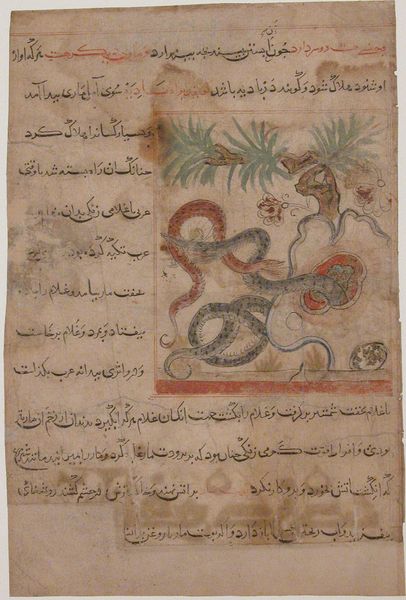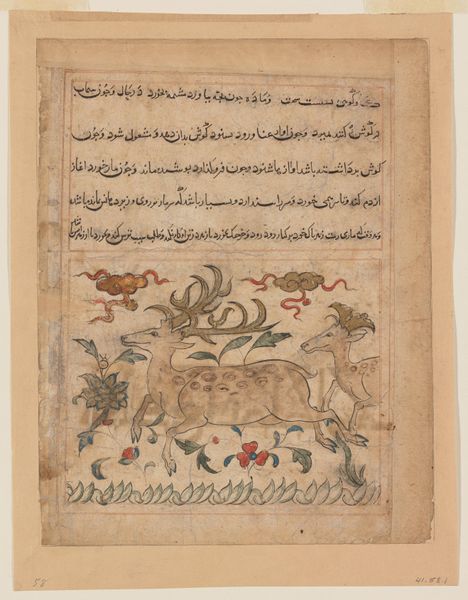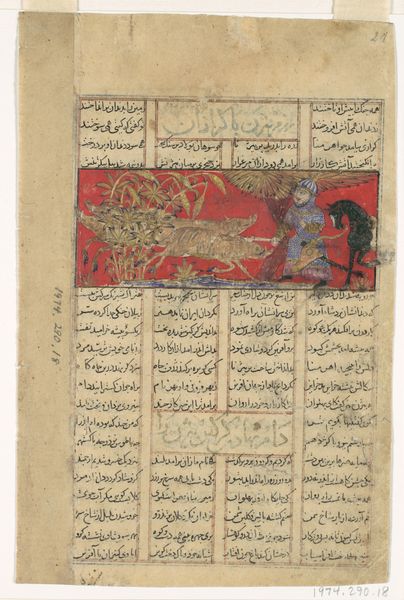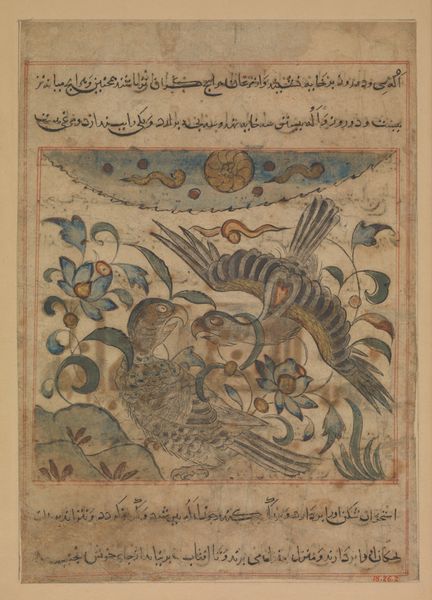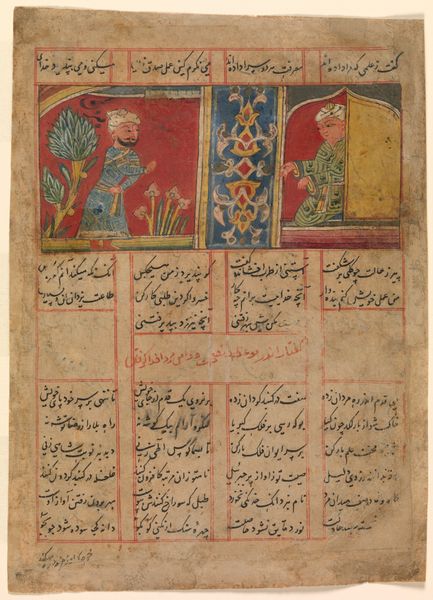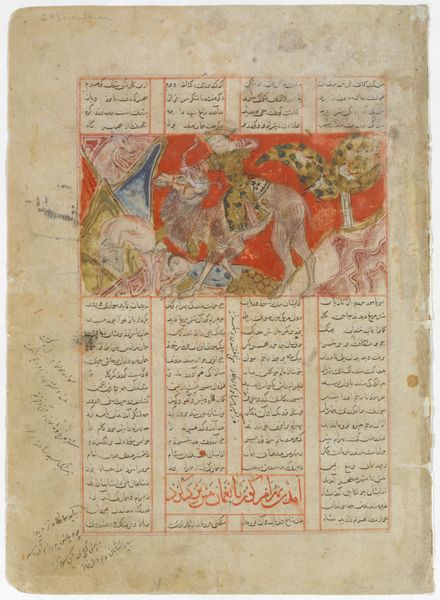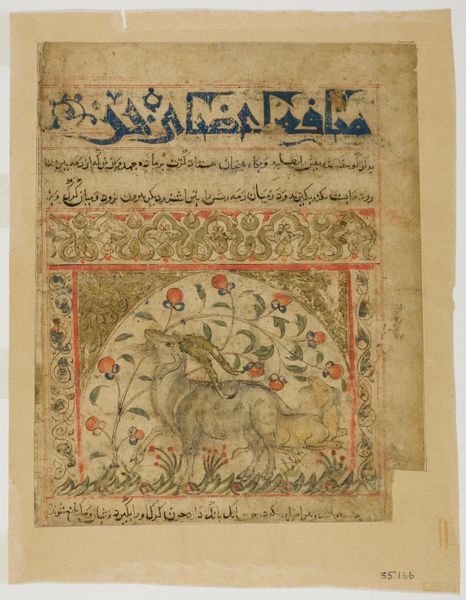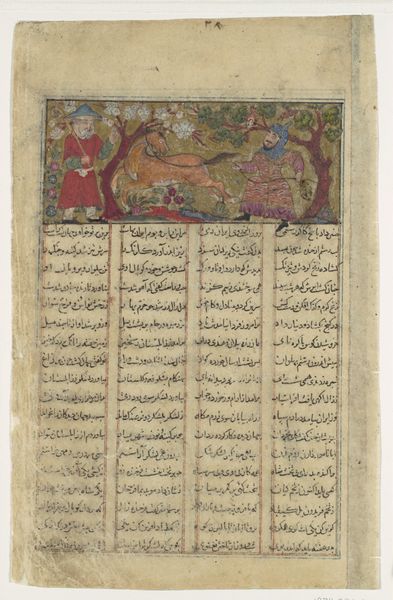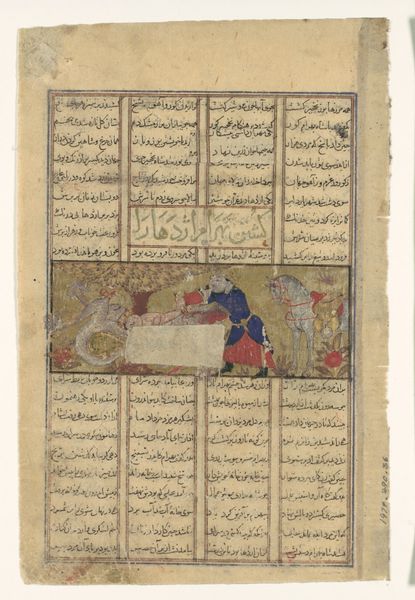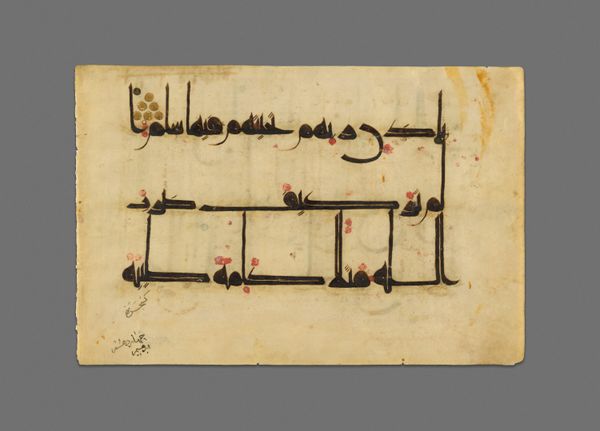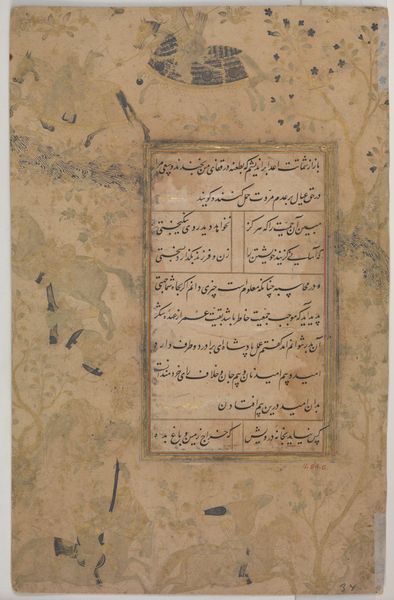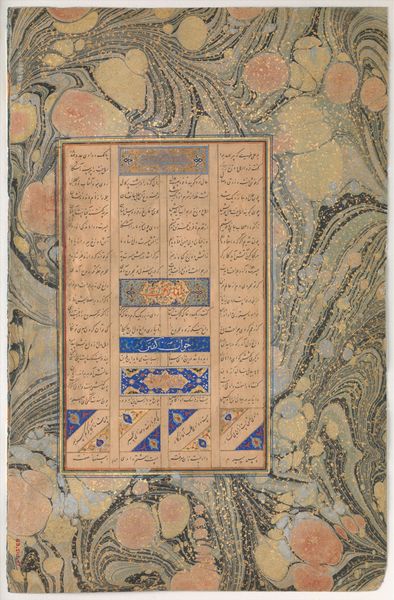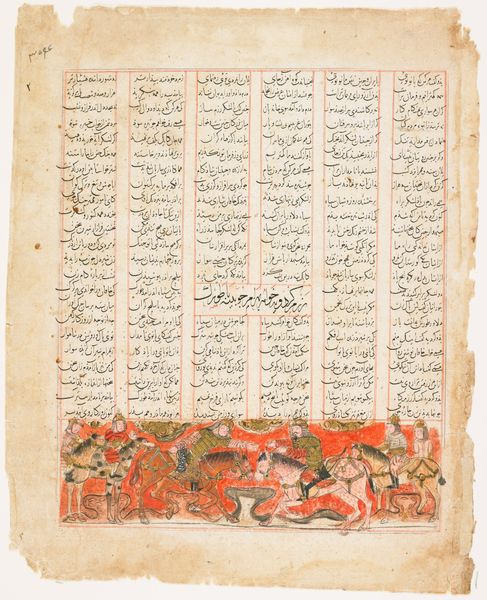
Viper in a Rocky Garden from Manafi' al-Hayawan (On the Usefulness of Animals) of Ibn Bakhtishu' c. 1300
0:00
0:00
drawing, paper, ink
#
drawing
#
narrative-art
#
animal
#
asian-art
#
landscape
#
figuration
#
paper
#
ink
#
islamic-art
#
miniature
Dimensions: 24.3 × 18.9 cm (9 9/16 × 7 7/16 in.)
Copyright: Public Domain
Editor: This miniature, "Viper in a Rocky Garden" from around 1300, comes from Ibn Bakhtishu’s "Manafi' al-Hayawan," and is done in ink on paper. The serpent coiled around the rock gives me a sense of contained energy, poised to strike, and I'm interested in the dynamic it creates with the floral background. What do you see in this piece, looking at it from your perspective? Curator: Intriguing observation. What initially strikes me is the meticulous detail in rendering the viper's scales against the simplified vegetal forms. Note how the artist uses line—primarily contour lines—to define shapes and create a sense of volume. The composition adheres to a structured design where the serpent acts as the central element, its curvilinear body contrasting sharply with the angularity of the rock. Do you find that contrast contributing to the artwork's visual appeal? Editor: Yes, it does. The curving snake and angular rock create a satisfying tension. The use of color is quite restrained; How does the artist achieve depth with such a limited palette? Curator: Precisely. The depth here is not reliant on perspective in a Western sense, but is achieved through layering and the strategic placement of elements. The foliage creates a backdrop, and the serpent is brought forward through stronger line work and slightly darker tonality. Note the symbolic importance of each of these. The garden, in this representation, offers a formal backdrop to a visual text on natural philosophy and medicine. Is this your reading as well? Editor: It makes perfect sense. I see now how each choice—the composition, the line, the color—serves to focus our attention on the viper, but also invites us to appreciate the world it inhabits, highlighting how function and purpose are manifested here in formal terms. Thank you. Curator: A worthwhile observation on a fascinating work. Considering how function defines form provides significant clues here, and illuminates its place within both artistic and medical historical traditions.
Comments
No comments
Be the first to comment and join the conversation on the ultimate creative platform.
